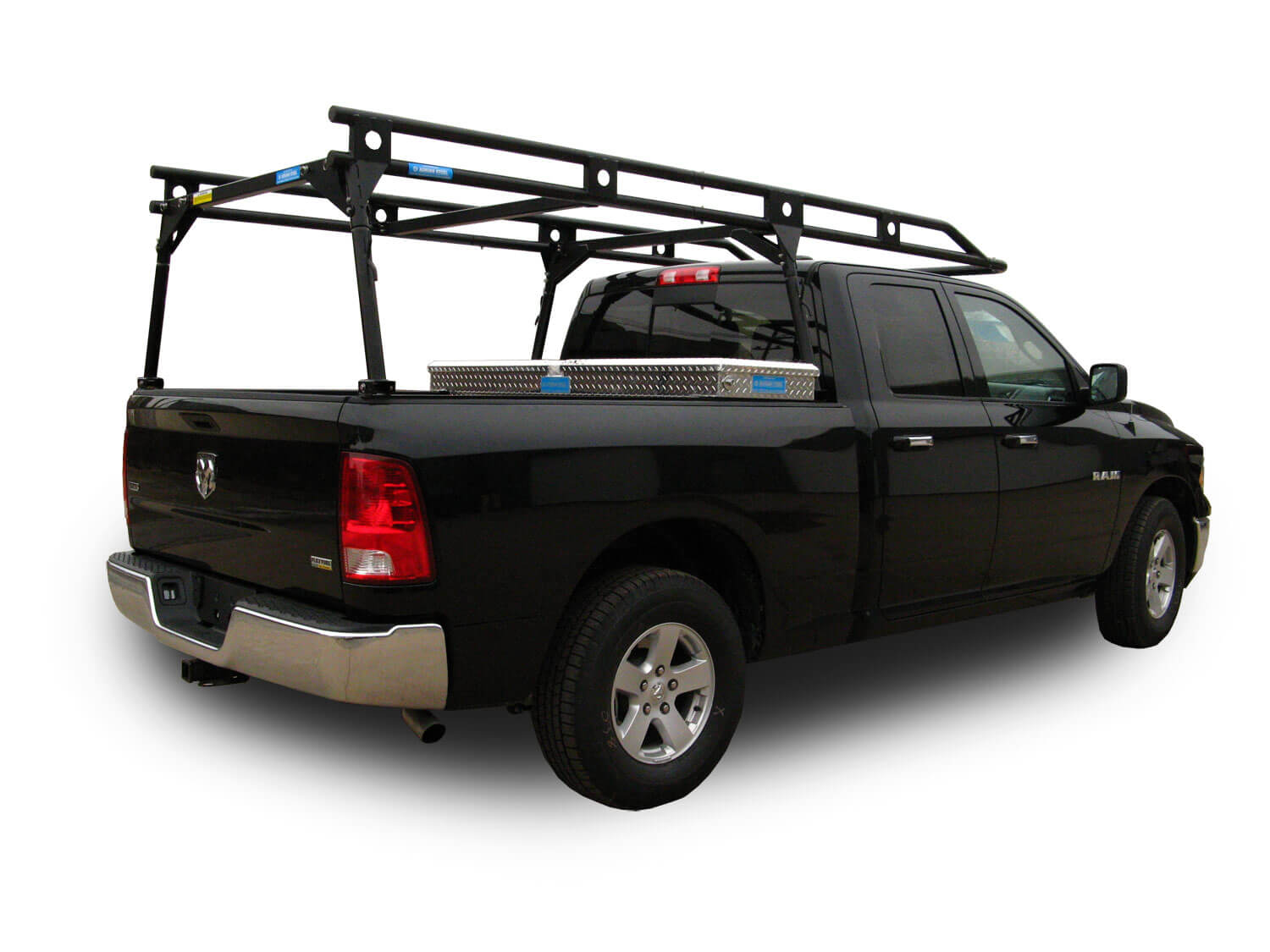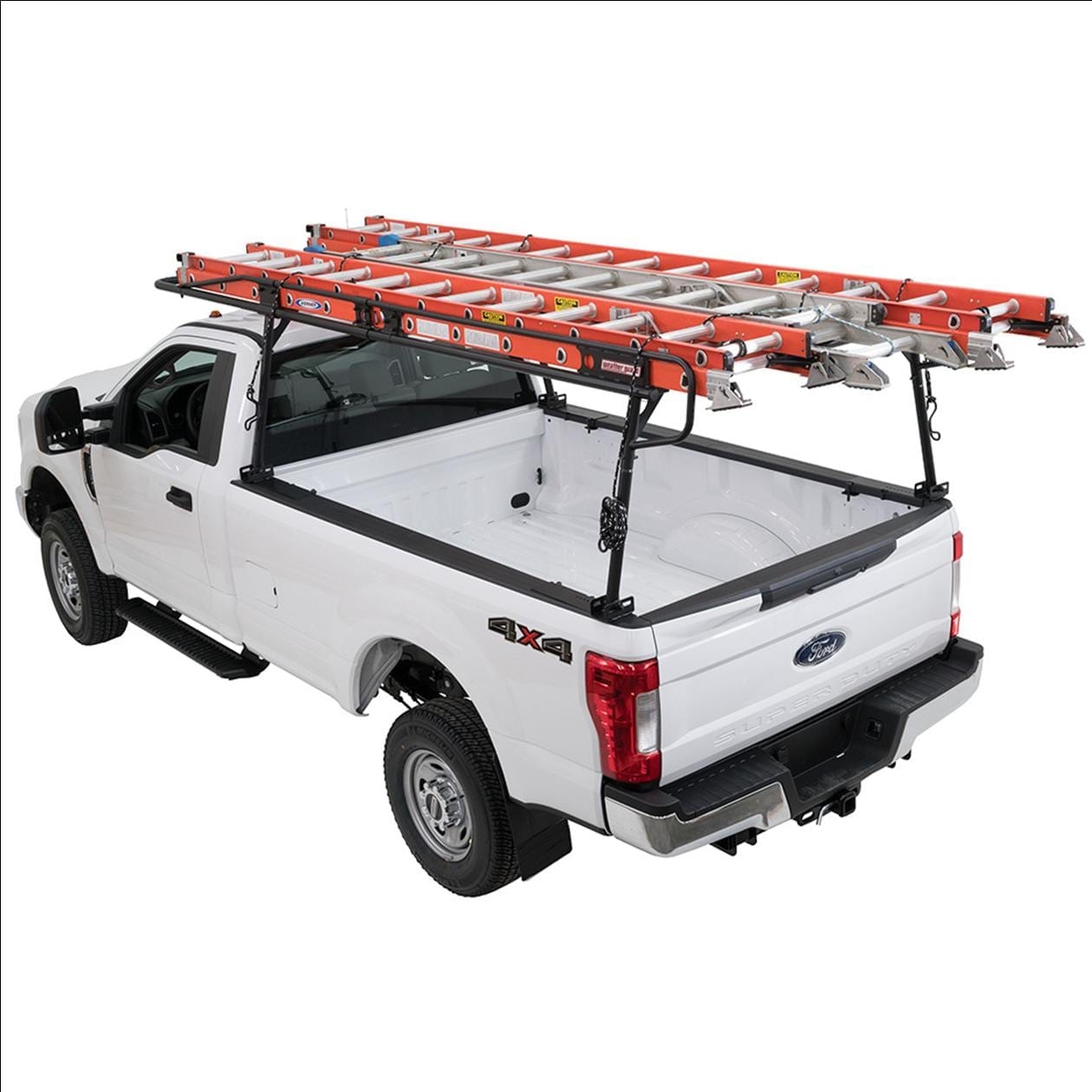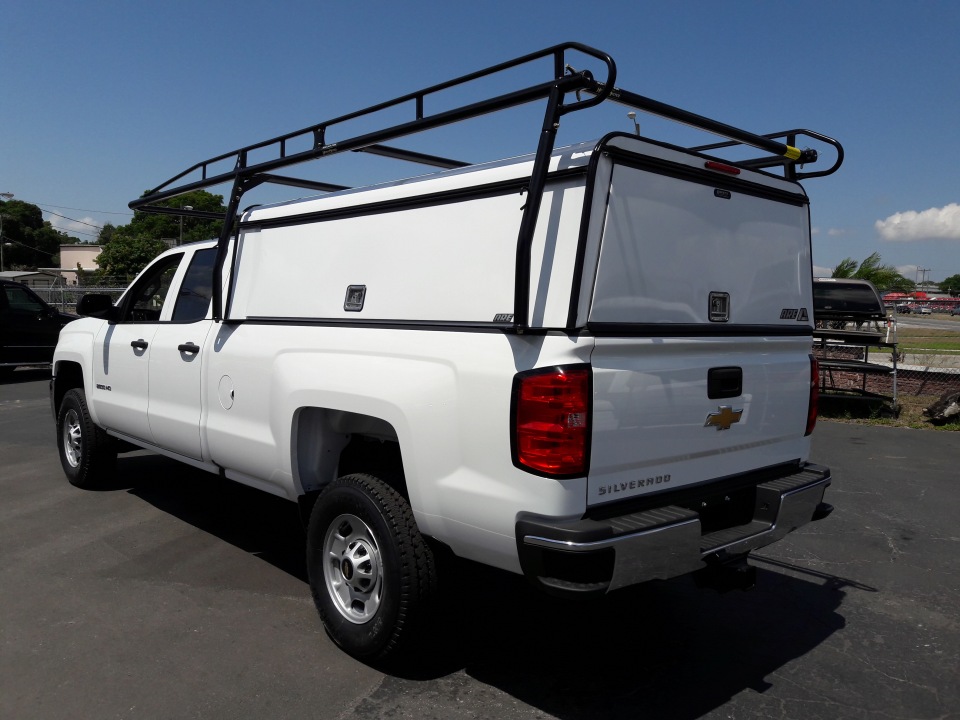Ladder Racks For Pickup Trucks: Elevating Your Truck’s Utility and Safety pickup.truckstrend.com
For anyone who owns a pickup truck, whether you’re a seasoned contractor, a diligent plumber, an adventurous kayaker, or a dedicated DIY enthusiast, the need to transport long, unwieldy items safely and efficiently is a recurring challenge. This is where ladder racks for pickup trucks come into play. Far more than just a place to stash a ladder, these robust systems transform your truck into a highly capable workhorse, freeing up valuable bed space and ensuring your cargo, and everyone around it, remains secure. In this comprehensive guide, we’ll delve into the world of ladder racks, exploring their benefits, types, selection criteria, installation, and much more, helping you make an informed decision for your specific needs.
I. What Are Ladder Racks and Why Do You Need One?
Ladder Racks For Pickup Trucks: Elevating Your Truck’s Utility and Safety
At its core, a ladder rack is an aftermarket accessory designed to be mounted on a pickup truck, providing elevated support for transporting oversized items that typically wouldn’t fit safely within the truck bed or would consume all available space. While the name suggests their primary use, these racks are incredibly versatile, capable of carrying everything from extension ladders and lumber to PVC pipes, kayaks, and even large sheets of material.
The necessity of a ladder rack stems from several critical benefits:
- Enhanced Safety: The most paramount reason. Improperly secured long items can shift, slide, or even fall off a truck, posing a severe hazard to other drivers and pedestrians. Ladder racks provide multiple secure tie-down points, keeping your cargo firmly in place, even at highway speeds.
- Maximized Truck Bed Space: By lifting long items above the truck bed, ladder racks free up the entire cargo area for tools, equipment, supplies, or other smaller items. This significantly increases your truck’s carrying capacity and organization.
- Convenience and Efficiency: Loading and unloading ladders or lumber becomes a much simpler task, reducing strain and saving time on job sites or during recreational outings. Many designs allow for easy single-person operation.
- Cargo Protection: Keeping items elevated prevents them from dragging on the ground or getting damaged by objects inside the truck bed. It also protects your truck’s paint and bed rails from scratches and dents.
- Professional Appearance: For tradespeople, a well-organized truck with a sturdy ladder rack conveys professionalism and reliability to clients.
- Versatility Beyond Ladders: As mentioned, these racks are not just for ladders. They are indispensable for plumbers carrying pipes, electricians transporting conduit, carpenters moving lumber, and outdoor enthusiasts hauling canoes or kayaks.

II. Types of Ladder Racks for Pickup Trucks
The market offers a diverse range of ladder rack designs, each with its unique advantages and ideal applications. Understanding these types is crucial for choosing the right fit for your truck and specific needs.
-
Over-Cab Racks (Cantilever Racks): These are perhaps the most common type, extending over the truck’s cab. They typically consist of two vertical supports mounted near the front of the bed, with a crossbar extending over the cab, and a rear crossbar near the tailgate.
- Pros: Distributes weight effectively, allows for very long items, maintains full bed access.
- Cons: Can increase overall vehicle height (potential for clearance issues), may affect aerodynamics and fuel efficiency, often requires drilling for installation.

-
Rear-Mount Racks (Back Racks/Headache Racks with Supports): These racks primarily mount to the rear of the truck bed, often resembling a traditional headache rack but with additional vertical supports and a crossbar that extends over the bed. Some are designed to work in conjunction with separate front bed rail mounts.
- Pros: Simpler design, generally less expensive, protects the rear window, can be good for shorter items.
- Cons: Limited in how far forward they can support cargo without additional front mounts, may obstruct rearview.
-
Bed-Mount Racks (Side-Mount/Perimeter Racks): These systems typically mount along the bed rails, often with multiple uprights and crossbars that run perpendicular to the truck’s length.
- Pros: Lower profile than over-cab racks, good for carrying items horizontally along the bed, allows for some tonneau cover compatibility.
- Cons: Can interfere with bed rail accessories or some tonneau covers, may not support extremely long items as effectively as over-cab racks.
-
Adjustable/Modular Racks: These highly versatile systems allow for significant customization. Components can often be added, removed, or adjusted in height and width to accommodate different cargo sizes or specific needs.
- Pros: Extreme flexibility, can be adapted for various tasks, often designed for toolboxes or other accessories.
- Cons: Can be more complex to install and adjust, generally higher price point.
-
Truck Cap/Topper Racks: If your truck has a camper shell or hard tonneau cover, specialized racks can be mounted directly to these structures.
- Pros: Integrates seamlessly with existing truck accessories, provides excellent elevated storage.
- Cons: Requires a truck cap or topper, capacity is limited by the topper’s structural integrity.
-
Drill vs. No-Drill Installation: This refers to the mounting method. Drill-on racks offer maximum stability and weight capacity but require drilling into the truck bed rails or frame. No-drill (clamp-on) racks use clamps to secure the system to the bed rails, offering easier installation and removal, but often with lower weight capacities.

III. Key Features and Considerations When Choosing a Ladder Rack
Selecting the ideal ladder rack involves weighing several critical factors to ensure it meets your functional requirements, fits your truck, and offers long-term durability.
- Material:
- Steel: Typically heavier and stronger, offering higher weight capacities. It’s often more affordable but susceptible to rust if not properly coated or maintained.
- Aluminum: Lighter weight, excellent corrosion resistance (ideal for coastal areas), and often has a more premium finish. It’s generally more expensive but easier on your truck’s suspension and potentially better for fuel economy.
- Weight Capacity: This is paramount. Determine the maximum weight of the items you intend to carry. Rack capacities can range from 250 lbs to over 1000 lbs. Always check the manufacturer’s specifications and consider a buffer.
- Installation Method: Decide between drill-on (more permanent, higher capacity) and no-drill (easier installation, less invasive). Consider your comfort level with drilling and your long-term commitment to the rack.
- Adjustability: Look for racks with adjustable height, width, or removable crossbars if you plan to carry various types of cargo or need to clear specific truck accessories.
- Compatibility: Ensure the rack is designed for your specific truck make, model, and year. Also, consider compatibility with other accessories like toolboxes, bed liners, or tonneau covers. Some racks are designed to work with tonneau covers, while others will obstruct them.
- Security Features: Integrated tie-down points (e.g., D-rings, eyelets) are essential. Some racks offer channels for adding specialized clamps or even integrated locking mechanisms to secure your cargo.
- Aerodynamics & Noise: The design of the rack can affect wind resistance and noise. Some racks incorporate wind fairings to reduce drag and whistling.
- Accessory Compatibility: Can you mount additional accessories like lights, flags, or specialized tool mounts to the rack?
IV. Installation and Maintenance Tips
Proper installation and routine maintenance are crucial for the longevity and safe operation of your ladder rack.
Installation Steps (General):
- Read the Instructions: Every rack is different. Thoroughly read the manufacturer’s installation manual before you begin.
- Gather Tools: Ensure you have all the necessary tools (wrenches, drills, measuring tape, level, safety glasses) as specified in the manual.
- Prepare Your Truck: Clean the mounting surfaces. If drilling, mark carefully and use pilot holes.
- Assemble Components: Assemble the main rack components on the ground first, if applicable, making sure all bolts are hand-tight.
- Mount to Truck: Carefully lift and position the rack onto your truck. For drill-on models, align holes and secure with hardware. For clamp-on, ensure clamps are tight and evenly distributed.
- Final Tightening: Once everything is aligned and positioned, fully tighten all bolts and fasteners according to manufacturer torque specifications.
- Test: Gently shake the rack to ensure it’s securely mounted. Double-check all connections.
Maintenance Tips:
- Regular Inspection: Periodically check all bolts, nuts, and welds for signs of loosening, wear, or damage. Tighten any loose fasteners immediately.
- Cleaning: Wash the rack regularly, especially after exposure to salt (from roads or sea air), dirt, or grime. This prevents corrosion and keeps it looking good.
- Lubrication: For racks with moving or adjustable parts, apply a silicone-based lubricant to ensure smooth operation.
- Rust Prevention: For steel racks, inspect for any chipped paint or scratches that could expose bare metal to rust. Touch up with rust-inhibiting paint as needed.
- Load Securement: Always use appropriate tie-down straps (ratchet straps are highly recommended) and secure cargo at multiple points to prevent shifting during transit. Distribute weight evenly.
V. Maximizing Utility: Beyond Ladders
While "ladder rack" is the common term, these accessories are workhorses for a variety of cargo. Their elevated position and sturdy construction make them ideal for:
- Building Materials: Lumber, PVC pipes, metal conduit, rebar, siding, trim, and drywall sheets.
- Recreational Gear: Kayaks, canoes, paddleboards, surfboards, long fishing rods, and even some rooftop tents (ensure weight capacity).
- Long Tools: Shovels, rakes, brooms, and other landscaping equipment that won’t fit neatly in the bed.
- Specialized Equipment: Certain racks can be adapted with specific mounts for specialized tools or equipment.
VI. Ladder Racks For Pickup Trucks Price Table
The cost of ladder racks varies significantly based on material, type, brand, weight capacity, and features. Here’s a general price range:
| Rack Type | Material | Typical Price Range (USD) | Key Features / Notes |
|---|---|---|---|
| Rear-Mount/Basic | Steel | $150 – $400 | Simple, often for lighter duty, may not extend over cab. |
| Over-Cab (Entry) | Steel | $300 – $600 | Good for general use, basic features, often drill-on. |
| Over-Cab (Mid-Range) | Steel / Aluminum | $500 – $1,000 | Higher capacity, better finishes, some adjustability, drill or no-drill options. |
| Bed-Mount (Perimeter) | Steel / Aluminum | $400 – $900 | Lower profile, good for specific cargo, may allow tonneau cover. |
| Adjustable/Modular | Steel / Aluminum | $700 – $1,500+ | Highly versatile, customizable, can integrate with toolboxes, premium features. |
| Truck Cap/Topper | Steel / Aluminum | $300 – $800+ | Requires a truck cap/topper for mounting, specific designs. |
Note: Prices are estimates and can vary based on brand, specific model, features, and where purchased. Professional installation, if desired, will be an additional cost.
VII. Frequently Asked Questions (FAQ)
Q1: Do ladder racks damage my truck?
A1: When properly installed according to manufacturer instructions, ladder racks should not damage your truck. Drill-on models create holes, but these are typically in non-structural areas and sealed. Improper installation or overloading can lead to damage.
Q2: Can I install a ladder rack myself?
A2: Many ladder racks are designed for DIY installation and come with detailed instructions. Basic tools are usually sufficient. However, if you’re uncomfortable with drilling or heavy lifting, professional installation is always an option.
Q3: How much weight can a ladder rack hold?
A3: Weight capacity varies greatly by rack type and material, typically ranging from 250 lbs for lighter-duty models to over 1000 lbs for heavy-duty commercial racks. Always check the manufacturer’s specifications for your specific rack.
Q4: Will a ladder rack affect my gas mileage?
A4: Yes, a ladder rack, especially when loaded, will increase aerodynamic drag and can slightly reduce your fuel efficiency. The impact is generally minor for unloaded racks but becomes more noticeable with bulky cargo.
Q5: Are all ladder racks universal?
A5: No. While some racks are highly adjustable to fit a range of truck models, most are designed for specific truck makes, models, and bed lengths. Always verify compatibility before purchasing.
Q6: Can I use a tonneau cover with a ladder rack?
A6: It depends on the design of both the tonneau cover and the ladder rack. Some ladder racks are specifically designed to be compatible with certain types of tonneau covers (e.g., roll-up or folding covers that sit flush with the bed rails). Look for "tonneau compatible" features.
Q7: How do I prevent my ladder rack from rusting?
A7: For steel racks, choose one with a durable powder-coat finish. Regularly wash and dry the rack, especially after exposure to road salt. Touch up any chips or scratches in the paint immediately with rust-inhibiting paint. Aluminum racks are naturally corrosion-resistant.
Conclusion
A ladder rack for your pickup truck is more than just an accessory; it’s an investment in safety, efficiency, and versatility. By providing a secure and elevated platform for transporting long and bulky items, it transforms your truck into a more capable and organized asset, whether for demanding professional tasks or ambitious recreational adventures. Understanding the different types, key features, and proper maintenance will empower you to choose the perfect rack that not only fits your truck but also seamlessly integrates into your lifestyle or workflow, ensuring your cargo arrives safely and your truck remains ready for any challenge.



